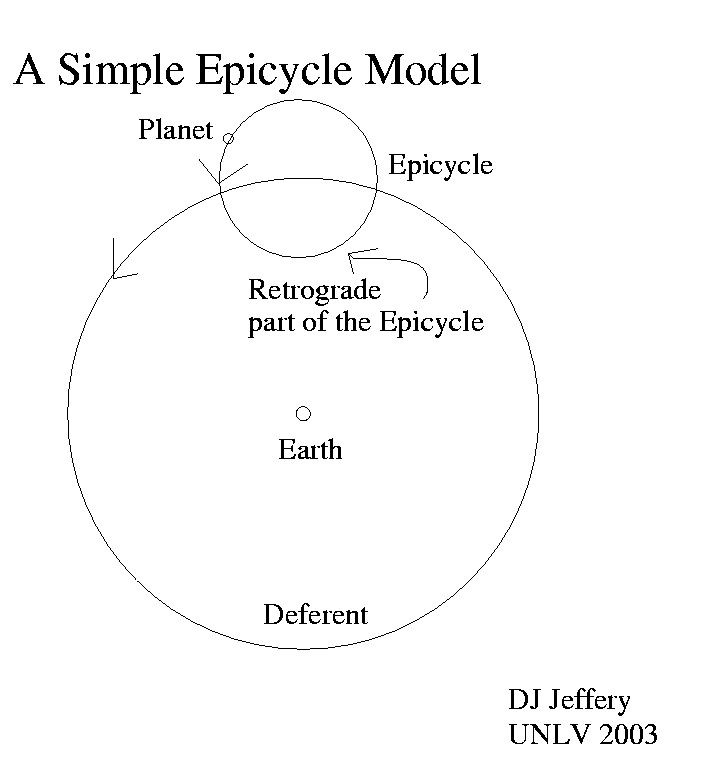
Caption: A simple epicycle model.
This simple epicycle model puts the Earth at the center of deferent (the main circular orbit).
The epicycle (secondary circular orbit) has its center (which is an empty point in space) on the deferent. This center exhibits uniform circular motion on the deferent.
A planet orbits with uniform circular motion on the epicycle.
By adjusting the relative sizes of the deferent and epicycle and the angular velocities of motion on them, it is possible to make the model planet execute nearly the same motions in angle on the sky (including apparent retrograde motion) as the real planet. In other words, you can fit the epicycle model to the observations.
Of course, the model planet does NOT have the correct spatial positions.
But if you CANNOT measure distances to the planets---and the Ancients could NOT---then you would NOT know that the spatial positions were wrong.
So as far as you could tell the epicycle model was correct---it saved the phenomena: i.e., explained what was observed though NOT necessarily what was NOT observed.
Apollonius of Perga (c.262--c.190 BCE) is believed to have invented the simple epicycle model (see Wikipedia: Apollonius of Perga: Apollonius' contribution to astronomy).
Complicating features were added to it by various astronomers. Most famously/infamously the equant Ptolemy (c.100--c.170 CE).
Credit/Permission: ©
David Jeffery,
2003 / Own work.
Image link: Itself.
Local file: local link: epicycle.html.
File: Ptolemy file:
epicycle.html.